Projecttitel:TTSH rev2 Build guide
Status: FINISHED
Startdate: 13 Nov.2014
Duedate: 22.Jan. 2015
update: 03.February
Manufacture link: DSL-man.de
original TTSH rev.2 build guide should be updated in next days here: http://build.thehumancomparator.net/
Muffwiggler build thread: https://www.muffwiggler.com/forum/viewtopic.php?t=130493
further here: http://electro-music.com/forum/viewtopic.php?p=407150#407150
check the rev.1 build guide for more documents
Schematics: http://thehumancomparator.net/wordpress/wp-content/uploads/2014/05/ttshv2schematics.pdf
Release notes:
The second PCB release aka v2 release was released February 2015, the naming of v2 is related to the second sale from zthee, its not the same as zthess internal releasenumbers.(v7.2)
This Description is for Builder with experience in parthandling and solderjobs - otherwise check: http://build.thehumancomparator.net/
Changes between first Version and rev.2:
- Powersection, two 1 inch voltage DC-DC converters, embedded powerregulators like nordcores pcb addon on rev1 , 3x SMD inductors/chokes and more
- Amplifier : new design without cooling, other Amplifier Transistors and some other parts in this section
- LED Driver redesign
- multiples on pcb
- speaker holes
- switches: you get with the pcb kit few small pcbs with - this are used like a washer for the switches, in result switch mounting is easier as in TTSH rev.1 (pics on my website)
- some minor fixes
This Guide is only for DIY Guys with experience, i´m not responsible for defects or usage issues.
short: dont use the onboard powersupply due to EMV issues - the DC_DC section bleeds in the VCF in result of high frequency tones
check the TTSH 230V/110V Powersupply page
- solder all SMD parts (2x3 100nf on vco pcb, 3x chokes, 2x power regulator), clean this area after soldering if needed. (is part from step 4)
(its very usefull to add some/enough soldercore to the soldermask - place the part on it and warm up/heat the part ) - mount 5 spacers to the pcb in order to have enough space for the resistor legs between your desk and the pcb.
- sort all the bags containing the resistors after the range: 1R -999ohm, 1k - 9,9k, 10k - 99k, 100k -999k, 1M - 22M, sort all caps to MLCC and electrolyt caps too - it makes things easier
for internal 110V/230V powersupplys only (like powerone hbb1.5/haa0.8) see here
- mount the powersection parts, power input header (white 2pole MTA156), the 3 SMD chokes, 2x Voltageregulators ICS resistors, caps.. (the both murata /traco converter after SMD JOB)
mount the both DC-DC converter (murata - black square)make a powercable with the 2,1mm pc jack (make sure you run a diode test with the 2,1mm jack - one of the poles is the switch, you dont need them) be careful !! (make sure your powersupply/wandwart have the positive 12V inside and minus at the outside of the plug.add a jumper- bridge between the both murata dc-dc adapter - you find a marking on pcb (its for grounding)before you connect the wallwart psu to the jack/plugs of the pcb, test the 12V DC polarity on the 2pol orange jack.connect the orange jack to the pcb header andplug in the wallwarttest the -15V/0/+15V output on the PCB, adjust with the multiturntrimmer to +/15V the value (hopeful you have not the cheapest DMM and have 10% tolerance) measure between ground and -15V, ground to 15V (dont use TP1/TP3)only, if you measure -15/15V you can continue building, otherwise you'll likely destroy all trannys, ics and other parts..
- build all 3 VCO Subboards - otherwise you'll have trouble with looking for the parts of the main pcb, this is strictly recommend (you start with resistors, caps, ic sockets) tempco and trannys are not needed yet.
IF YOU WANT ADD LATER the SYNC Option - dont cut the leads short - otherwise its hard to solder later the addional cables, parts to the SUB VCO pcb. - MAIN PCB at first only one side of the pcb !! use at beginning the fader side with few resistors (47k, 220R) dont fit the both 100k, 1M resistors on left hand, it makes things easier later - solder the handful resistors from both pcb sides.
- turn/flip pcb and start the pcb side with most components
- at first fill the resistors in order to spot any leftover resistors.. then go to the next value.
- place all 100K resistors
- place all 1R 10R, 100R , 1k, 10K 1M resistors 22R,220R,470R, 330R,3k3, 33k,330k 3m3, 470r, 4k7,47k, 470k, 4m7, 680R, 6k8, 68k, 68k, 820R, 8k2,82k you can fill the values like 69k1 or 33k2, 54k3 later...
- you dont need the TL071 and there 2x100K resistors, 1x1M resistor, 1x 1uF cap - but bridge pin 6 to 7 of the tl071 socket
- turn the pcb, cut the legs a bit shorter in order to be able able to solder them
- solder this pcb side and cut the legs
- put all the resistors on this side of the
- turn the pcb cut the legs, solder the reistors, cut the legs short
- fill the pcb with all ceramic caps (MLCC) like 3p3, 5p, 10p, 20p (22p), 33p, 47p, 100p, 2n2, only MLCC caps not filmcaps here..
- solder the ceramic caps from the top, if the cap touches the pcb - put a small pice of cable (isolation) between pcb and cap to have enough space for soldering
- turn the pcb, solder the caps and cut the legs short
- turn the pcb again and put the few filmcaps in place step by step - it's easier to place the filmcap and bend the leg on the other side of the pcb - so that the cap doesn't fall off - solder the filmcaps from the backside and cut the legs.
- put the ic sockets in place step by step - maybe you have some help from someone fixing the sockets
- now take a break - if you haven't done before
- put all diodes and trannys in place .. for MJE172/MJE182 fit the rearside to to the white stripe on pcb (rearside is opposite from the text mark side), for matched pairs see pics at bottom gallery
- put all the LM301 in the IC-sockets
- build the VCO header connection for all 3 VCOs.. (its easier to place the header together, place it to mainpcb and fit the sub pcb on it, solder them on sub pcb , later on mainpcb (disconnect the headers while soldering)
- unmount the 25-30mm spacers (mounting stands) and replace them with the final 12mm spacers and screws..
- add the 8x 12mm spacer for the Speaker mounting, set screws from the frontpanel (the speaker mounting and wiring later
- solder all faders, begin with 1 solderpoint on every side, put the frontpanel on the pcb and check the fader orientation. - alternative: bend one leg on each side and solder one point only
- check the orientation
- finally solder all the faders..
- Jacks: solder on each corner 1-2 jacks, and 3 in middle, place the panel and then solder them
- then place all jacks, put the panel on top and mount the nuts on the jacks in the corners, then turn the panel, now you can solder all the jacks..
- switches - the TTSH rev.2 has separated tiny switch pcbs, use this like a spacer - in result the height of each switch fits better in the panel, dont forget the GATE pushbutton
- add the speaker to the pcb - set screws to the spacer behind the pcb, add the switched Stereo Headphone jack and run the wiring
- Speaker wiring
WARNING: never put a MONO plug in the headphone amp or your 10R resistors goes with smoke in the hell
TTSH rev.2+3 speaker wiring - approved
- if you want test the TTSH with speakers but without the headphone jack wiring add a jumper to TN/ T or RN/R otherwise your speaker won't work
- initial check : disconnect all sections, check the voltage near DC-DC adapter with a rectifier test between all rails to check for shorts, stop here if you found a failure ans start troubleshooting
- test and calibrate the TTSH - good luck
Pictures of a rev2. (7.1)
rev.2 |
|||
|---|---|---|---|
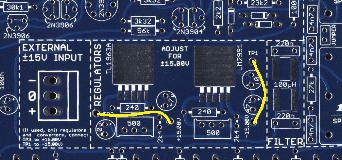
|

|
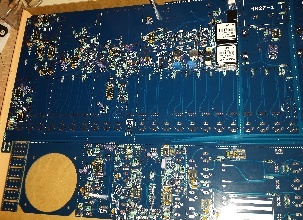
|
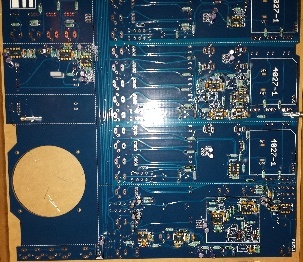
|
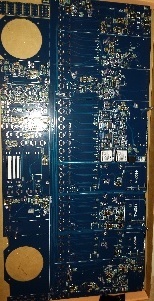
|
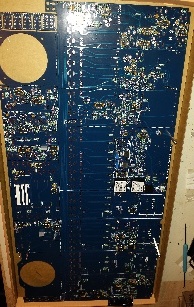
|
|
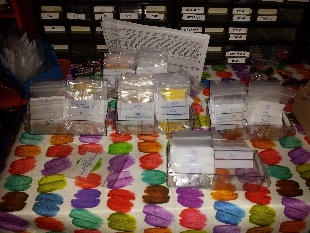
|
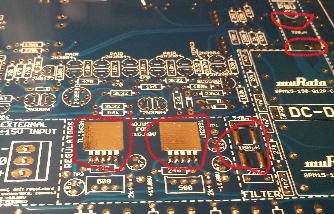
|
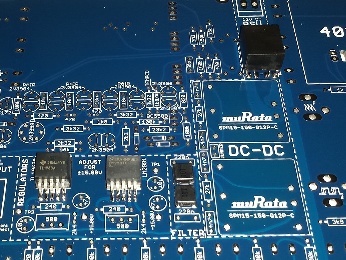
|
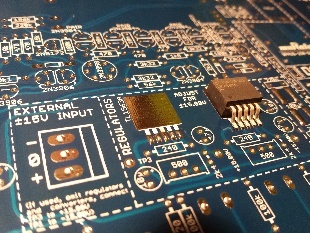
|
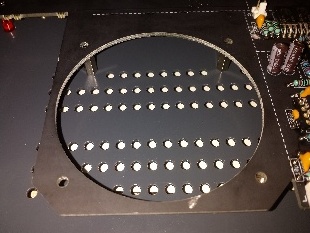
|
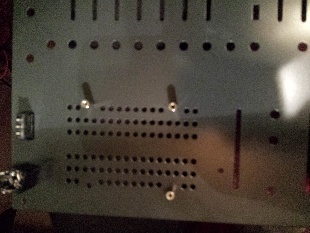
|
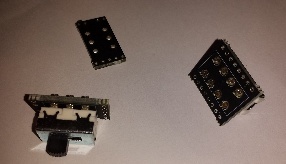
|
||
only for REV."2" (v7.1 on pcb top right corner)
Mainboard BOM
http://thehumancomparator.net/wordpress/wp-content/uploads/2015/01/ttshv2BOM.pdf
VCO Sub pcbs BOM
http://thehumancomparator.net/wordpress/wp-content/uploads/2015/01/4027v2BOM.pdf
please add: 6x 100nF SMT c0g caps in size 805
mouser part 100nF 77-VJ0805Y104JXXPBC
10nF works fine too (its only a decoupling cap)
3x Timing cap 680pF needs a polypropylene, polystyrene or silva mica cap(7.5mm footprint)
mouser: 80-PHE450HK3680JR05
you can try the usage instead of SMT inductors/chokes this:
http://www.reichelt.de/index.html?ACTION=3;ARTICLE=86466;SEARCH=L-HBCC %20100
(add enough soldercore to the pcb pads, bent the leads and solder this to the pads)
notice: the usage of 1k87 tempco 3300ppm instead of 3500ppm works fine too.
DIFF from Version 1to version2 (first TTSH from early2014 to second from early 2015)
http://thehumancomparator.net/wordpress/wp-content/uploads/2014/05/v1-v2-diffferences.pdf
Minor Bug/improvement: use a BC337-16 instead 2N5172 in the noise section more Details here (you don't need further mods)
Major Bug
Description: the onboard DC-DC adapter (Murata) bleeds in the VCF (EMV - high frequency)
Solution: use a external 110/230V powersupply or a other powersupply with 15V/-15V outputs and connect it on the 3pole MTA156 header (dont assemble the onboard power section)
check the 110V/230V powersupply page
works for most parts too..
TTSH hardcore builders guide (specially rev.1)
update: 01.October2014 - jumpers, speaker workaround for testing
The first TTSH was build with zthees Builders Guide and works fine, but its not effective to solder section by section.
from my second TTSH on I built them after these steps:
- add both jumpers, kybdCV/GND and near the ferrite beads
- sort out all resistors in values: 1R - 999R, 1K - 9K, 10K-99K, 100K-999K, 1M-22M , same with capaciators.
- take a label/sticker on places where you have MODS/bugfixes like c20 cap, noise mod etc..
- put the TTSH pcb on 25-30mm spacers (use the BD236/BD237 holes too for spacers) you have to mount a spacer on each side of the pcb so you can turn the pcb for soldering..
- build the complete VCO- Subboards (so you don't have to look for missing resistor points on the main pcb all the time)
- solder all IC sockets on both sides of the pcb (LED IC on the other side of the pcb)
- solder all voltage connectors (MTA´s) in the powersection, key cv, speaker etc.
- put all resistors in place on the main pcb, start with the highest amounts; (more than 60 x 100K) ... if you'll have completed nearly 80% and it'll be easier now to put the rest in place section by section.
- solder all resistors from the top
- turn pcb and cut all pins/legs - this way you can solder all pins/legs in one step..
- if you have a VCO voltage regulator from nordcore, put a tape over the 100nF/10uF caps near the power MTA header.
- Capaciators - begin with 100nF c0g for the audio path, followed by 100nF for the rest,and then all the other caps.. pay attention on the filmresistors... I use film caps (wima) for the VCF near matched trannys which makes the Filter sound really good.
- solder all caps from the front/rear.. keep attention on the C20 cap
- put all diodes and trannys in place ..(pay attention on c20, max noise fix, bridge instead of 2n5172 in clock, in VCF matched, sont mount the Amp. cooling blocks
- put all the LM301 in the IC-sockets
- build the VCO header connection for all 3 VCOs..
- unmount the 25-30mm spacers and replace them with the final 12mm spacers and screws..
- solder all faders, begin with 1 solderpoint on every side, put the frontpanel on the pcb and check the fader orientation. - alternative: bend one leg on each side and solder one point only
- check the orientaion
- finally solder all the faders..
- Jacks: solder on each corner 1-2 jacks, and 3 in middle, place the panel and then solder them
- then place all jacks, put the panel on top and mount the nuts on the jacks in the corners, then turn the panel, now you can solder all the jacks..
- switches.. unmount the panel, put all switches in place and mount the panel, turn the panel/pcb .. the switches fall in place, solder a bit.. turn the panel and check the orientation on the frontpanel, if it is good , solder finally ( please check the mechanical function of the switch before you mount them, sometimes you have faulty switches and its hard to desolder them..)
- *update 01.October 2014 : if you want to test the TTSH with speakers but without the headhone jack wiring add a jumper to TN/ T or RN/R otherwise your speaker won't work.
- build the power wiring cables and solder the internal DC-DC adapter..
- initial check : disconnect all sections, check the voltage near DC-DC adapter with a DMM .
- if you have a VCO regulator, build it, put it on the powerheader, drill a hole in the pcb and mount a spacer,calibrate the regulator to 14,6V
- test and calibrate the TTSH - good luck
This page is only for me
i dont support Main Power handling (ich supporte keine 110V/230V Basteleien)
in case of usage of 110V/230V powersupplys dont add the parts for the onboard regulator (TTSH rev.1+2)
use the frontpanel power switch for the LED driver TL071 socket to switch the LEDs on/off.
make sure you have a Main current fuse for the powersupply, typically i use IEC power inputs with linefilter and double fuse.
use rubber feeds otherwise the case "swings with the transformer frequency", you can hear it in the big ttsh case like a speaker.
tip: by usage of a internal 110V/230V psu - mount the psu in left corner and reverb tank on right/top corner with in/outputs to top - or you get a massive hum in reverb.
mount the psu on plastic/rubbers - because the empty case amplified the psu noise/hum/vibration.
Info for users with embedded switched Murata/TDK.. regulators:
(if you have added the both switched regulators, desolder the 220nF caps, 100uH caps)
For new build: (rev.2 aka 7.x pcb version)
- dont add the inductors, 47uf cap, 240R, 2k4, 4n7caps, 27k, voltage regulators, trimmer
- you only need to add: 3pin MTA156 header, run wires between TP3 and +15V and a Tp1 and -15V (see picture), (otherwise the Fader LEDs dont do his job
)
for condor/powerone hbb1.5 powersupplys:
cut VW1 and VW2 on pcb, run wires at the output included sense
picture shows 230V usage (Mains Input on transformer is different for 110V AC)
measure the 15/0/-15V before you connect it to the TTSH. if needed use the psu pcb trimmer to change it to the correct value,
recalibrate your VCO V/oct and VCF 1V/oct if needed.
for condor/powerone haa0.8
only the transformer input 1+4 or 1+5 (for 230V) bridge the 2+3 pin, no trimming needed, measure the output
the usage of rubber feets minimize some vibrations from the transformer.
mount the reverb tank at top with in/output orientation at top or you get some hum from the PSU.
mount the PSU only on the left case side - on the right side is the reverb input and its very sensitive of magnetic fields.
Altitude´s PSU:
https://www.muffwiggler.com/forum/viewtopic.php?t=130814&postdays=0&postorder=asc&start=0
BOM: https://docs.google.com/spreadsheets/d/1Uzok7ukMIwXIj6s7ttx5T3A1coEmdKRUpbRWDNm_sHY/edit?usp=sharing
or Mouser LINK https://www.mouser.com/ProjectManager/ProjectDetail.aspx?AccessID=2fb9871cb1
dont forget to buy the Toroid https://www.digikey.de/product-detail/de/talema-group-llc/70083K/1295-1014-ND/3881427 Talema 70083K
| Qty3 | Value | Device | Package | Parts | Description | Digikey | Price (USD) | Ext. Price | |
| 1 | KK-156-2 | KK-156-2 | AC | 156 HEADER | A1971-ND | 0.19 | 0.19 | ||
| 1 | 2KBP | 2KBP | B1 | RECTIFIER | 2KBP10M-E4/51GI-ND | 0.78 | 0.78 | ||
| 6 | 3300 uF | CPOL-USE7.5-16 | E7,5-16 | C1, C3, C4, C5, C6, C7 | POLARIZED CAPACITOR | 565-2000-ND | 2.06 | 12.36 | |
| 2 | 0.1 uF | C-US025-024X044 | C025-024X044 | C2, C10 | CAPACITOR Ceramic | BC1148CT-ND | 0.44 | 0.88 | |
| 2 | 1 uF | CPOL-EUE2.5-6 | E2,5-6 | C8, C12 | POLARIZED CAPACITOR | 493-12827-1-ND | 0.25 | 0.5 | |
| 2 | 10 uF | CPOL-EUE2.5-6 | E2,5-6 | C9, C11 | POLARIZED CAPACITOR | 493-1144-ND | 0.22 | 0.44 | |
| 2 | 240R | R-US_0204/7 | 7/1/0204 | R5, R7 | RESISTOR | 237XBK-ND | 0.1 | 0.2 | |
| 2 | 1K | R-US_0204/7 | 7/1/0204 | R4, R6 | RESISTOR | 1.00KXBK-ND | 0.1 | 0.2 | |
| 2 | 10K | R-US_0204/7 | 7/1/0204 | R3, R8 | RESISTOR | 10.0KXBK-ND | 0.1 | 0.2 | |
| 2 | 2K | 3386-W | 3386W | R1, R2 | Timmer PV36W | 490-2880-ND | 1.51 | 3.02 | |
| 4 | 1N4002 | DIODE-D-7.5 | D-7.5 | D1, D2, D5, D6 | DIODE | 1N4002-TPMSCT-ND | 0.11 | 0.44 | |
| 2 | 2AMP | TR5 | TR5 | F1, F2 | FUSE | WK4257BK-ND | 0.7 | 1.4 | |
| 1 | MTA04-156 | J1 | 156 4 pin Header | A1972-ND | 0.2 | 0.2 | |||
| 1 | MTA03-100 | J2 | 100 3 pin header | A19470-ND | 0.2 | 0.2 | |||
| 2 | 529XXXXXXXX | 529XXXXXXXX | 529XXXXXXXX | KK1, KK2 | HEATSINK TO-220/218 | HS350-ND | 1.43 | 2.86 | |
| 2 | LED3MM | LED3MM | LED1, LED3 | LED | 160-1142-ND | 0.33 | 0.66 | ||
| 1 | L01-50VA | L01-50VA | L01-50VA | TR1 | TOROID TRANSFORMER | 1295-1014-ND | 39.58 | 39.58 | |
| 1 | V80212MS02Q | V80212MS02Q | V80212MS02Q | U$5 | Voltage Select Switch | CKC3001-ND | 4.09 | 4.09 | |
| 1 | LM317 | LM317TS | 317TS | U1 | VOLTAGE REGULATOR | LM317TFS-ND | 0.71 | 0.71 | |
| 1 | LM337 | LM337TS | 337TS | U2 | VOLTAGE REGULATOR | LM337TFS-ND | 0.71 | 0.71 | |
| Total | 68.91 |
Gallery
no earth wiring for TTSH in Picture 1, but its needed for powerone psus.
|
|
|
|

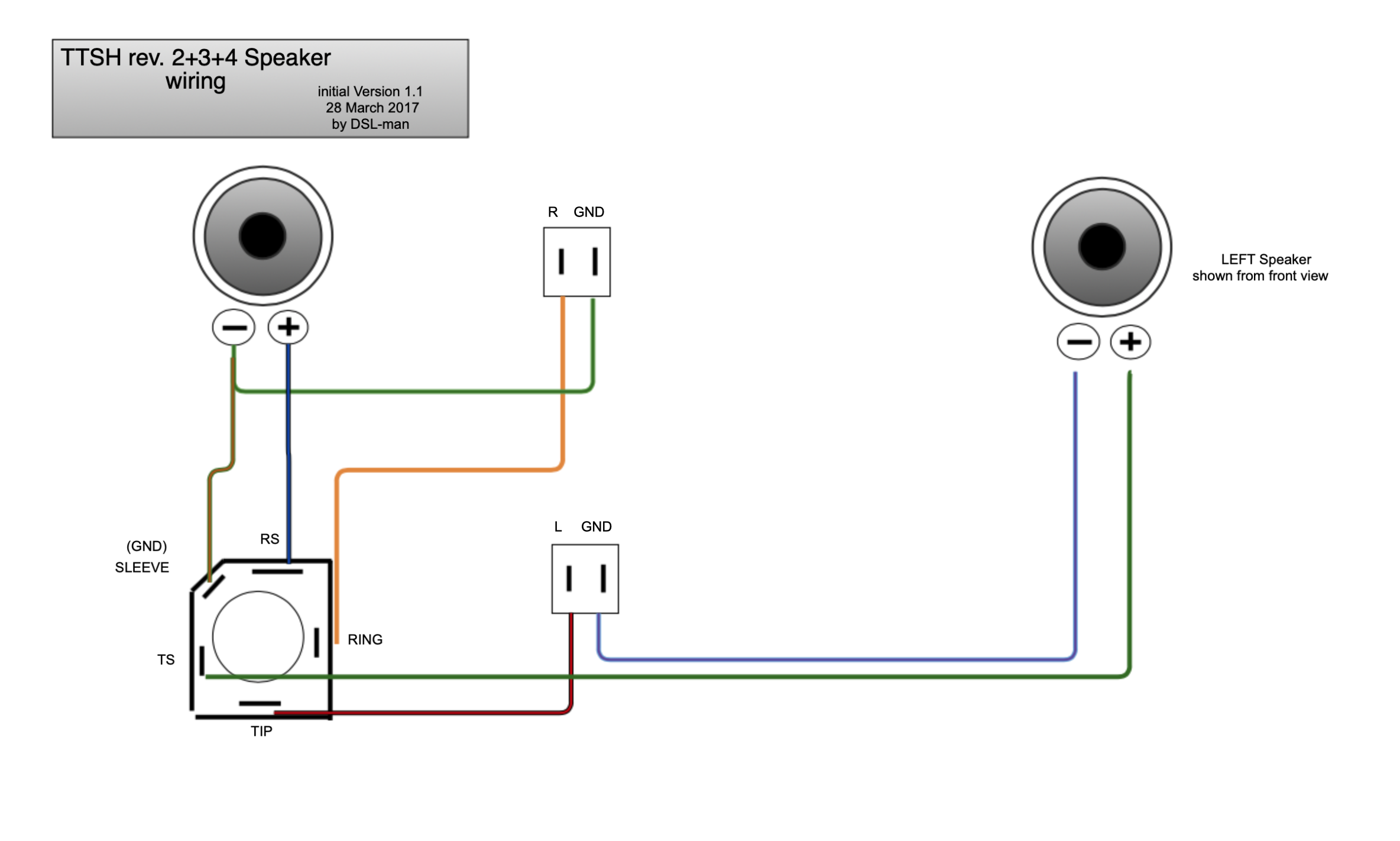

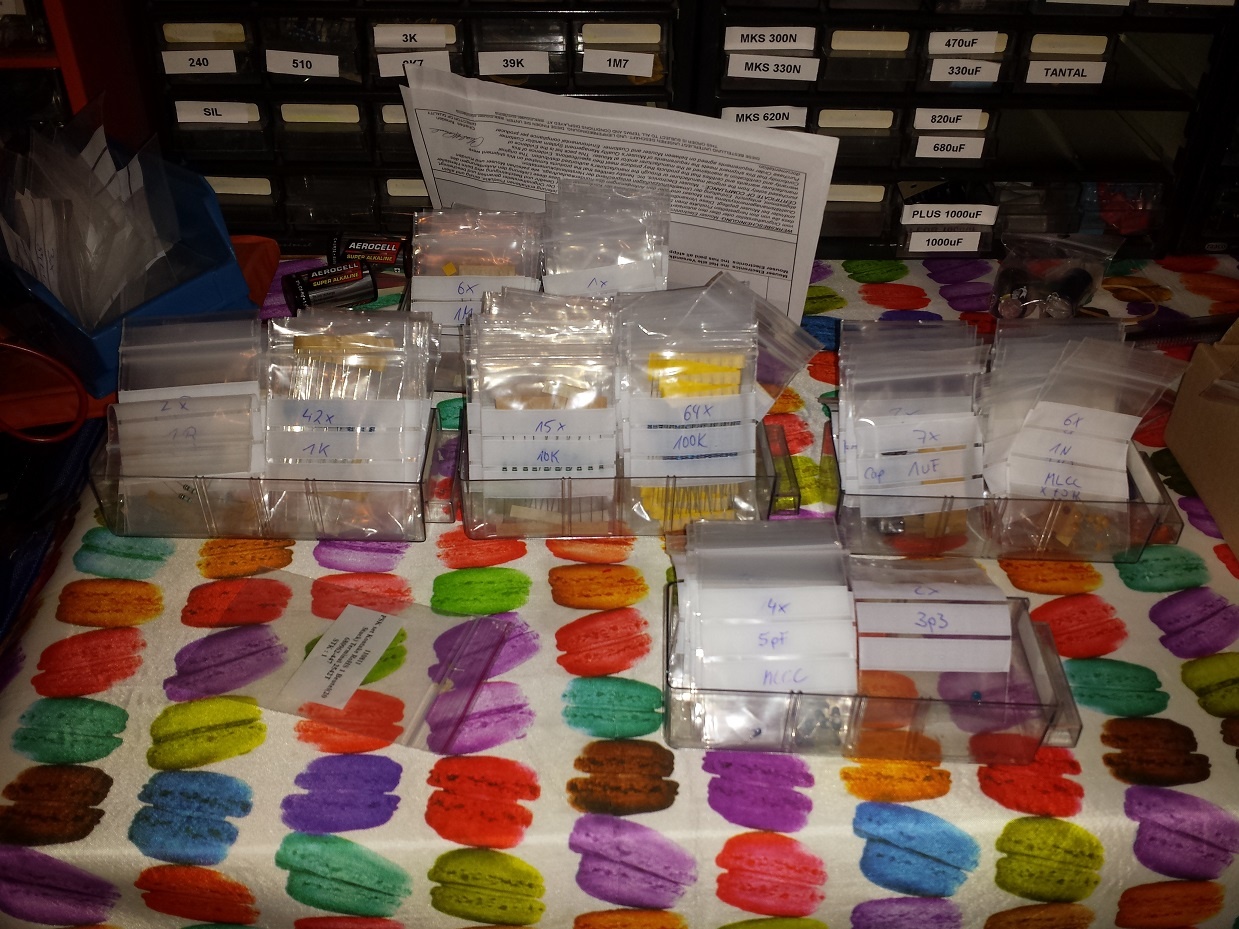

1 Comment
T Moore
Here is more info about ceramic capacitors (on Everipedia)